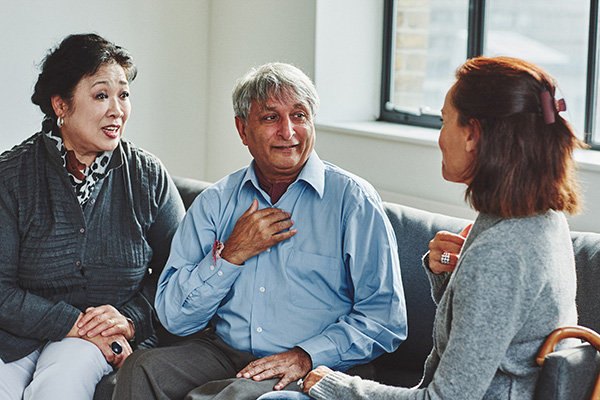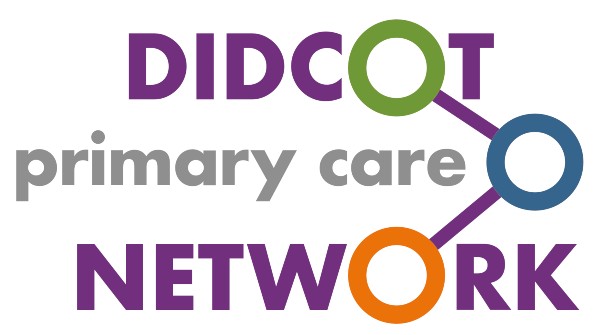We use cookies to help provide you with the best possible online experience.
By using this site, you agree that we may store and access cookies on your device. Cookie policy.
Cookie settings.
Functional Cookies
Functional Cookies are enabled by default at all times so that we can save your preferences for cookie settings and ensure site works and delivers best experience.
3rd Party Cookies
This website uses Google Analytics to collect anonymous information such as the number of visitors to the site, and the most popular pages.
Keeping this cookie enabled helps us to improve our website.
Chaperone Policy
The Health Centre has a defined protocol for the use of chaperones in medical examinations or procedures.
The protocol is intended to protect both patients and clinicians from either abuse or allegations of abuse, and to allow patients to make an informed decision about their treatment. It is a patient’s right to have a chaperone present should they so desire.

Chaperone Protocol
Purpose
Oak Tree Health Centre’s patients should experience all consultations, examinations and investigations safely and with as little discomfort or distress as possible. Equally, our clinicians are at an increased risk of their actions being misrepresented if they conduct examinations where no other person is present, and so must minimise the risk of false accusation or of inappropriate behaviour.
Patients may find any examination distressing, particularly if it is an intimate examination involving the breasts, genitalia or rectum. Also, consultations requiring the use of dimmed lights, close proximity, or the need for patients to undress and to be touched may make a patient feel vulnerable.
Chaperoning may help reduce distress, but must be used in conjunction with respectful behaviour which includes explanation, informed consent and privacy.
This protocol outlines the principles to be adopted for appropriately chaperoning patients during medical examinations or procedures; it is based on the Model Chaperone Framework published by the NHS Clinical Governance Support Team in June 2005.
Responsibility
The guidance on chaperoning is for the protection of both our patients and our healthcare staff. All clinicians and others working on their behalf have a duty to consider chaperoning issues as they relate to their work and to abide by the requirements of this protocol.
Consent
In attending a consultation it is assumed that a patient is seeking treatment and therefore is consenting to any necessary examination or procedure. However, before proceeding with an examination our clinicians will always seek to obtain, by word or gesture, some explicit indication that the patient understands the need for the examination and agrees for it to take place.
What is a chaperone?
A chaperone is present as a safeguard for both parties (patient and staff) and is a witness to the conduct of the examination/procedure and to the continuing consent of the patient during the examination/procedure.
The precise role of the chaperone varies depending on the circumstances. It may include providing a degree of emotional support and reassurance to patients but more commonly incorporates:
- providing protection to healthcare professionals against unfounded allegations of improper behaviour
- assisting in the examination or procedure, for example by handing instruments
- assisting with the undressing, dressing and positioning of patients
Who may chaperone?
- Informal chaperone: many patients feel reassured by the presence of a familiar person and this request in almost all cases should be accepted. This informal chaperone may not necessarily be relied upon to act as a witness to the conduct or continuing consent of the procedure. Under no circumstances should a child be expected to act as a chaperone. However, if the child is providing comfort to the parent and will not be exposed to unpleasant experiences it may be acceptable for them to stay. It is inappropriate to expect an informal chaperone to take part in the examination or to witness the procedure directly.
- Formal chaperone: this implies a clinical healthcare professional, such as a Practice Nurse or a Healthcare Assistant. This individual will have a specific role to play in the consultation and this role should be made clear to both the patient and the chaperone. It is important that chaperones have had sufficient training to understand the role expected of them. Protecting the patient from vulnerability and embarrassment means that the chaperone will usually be of the same sex as the patient. The patient will always have the right to decline a particular person as a chaperone if that person is not acceptable to them for any justifiable reason.
Training of chaperones
It will be ensured that staff who undertake a formal chaperone role will understand the following:
- what is meant by the term chaperone?
- the different types of intimate examination
- the rights of the patient
- the role and responsibility of the chaperone
- the mechanism for raising or reporting concerns
Arranging of chaperones
The relationship between our patients and healthcare staff is based upon trust. A clinician may have no doubt about a patient they have known for a long time and feel it is not necessary to offer a formal chaperone. However, this should not detract from the fact that any patient is entitled to a chaperone if they feel that one is required.
Any request from a patient to attend with an informal chaperone will be accommodated.
Wherever possible patients should advise the Health Centre prior to the appointment if they would like the presence of a formal chaperone. If a chaperone cannot be provided for the specified appointment time, an alternative date and time will be arranged.
It is left to the judgement of our clinicians as to whether they would like to request a formal chaperone to be present. If the presence of the chaperone is then refused by the patient, the clinician cannot insist that one is present. However, there may be cases where the clinician may feel unhappy to proceed, for example where there is a significant risk of the patient displaying unpredictable behaviour, or of making false accusations. In this case, the clinician must make their own decision as to whether to proceed or not, and to carefully document this together with the details of any procedure which is undertaken.
It is good practice to offer all patients a chaperone of the same sex for any examination or procedure. If the patient is offered and does not want a chaperone it is important to record that the offer was made and declined. The following Read codes (or their SNOMED equivalent) will be used:
- 9NP0 Chaperone offered
- 9NP2 Chaperone refused
- 9NP1 Chaperone present
- 9NP4 Chaperone not available
Staff will be aware that intimate examinations might cause anxiety for both male and female patients whether or not the examiner is of the same gender.
It is acceptable for one of our healthcare professionals to perform an intimate examination or procedure without a chaperone if the situation is life threatening or speed is essential in the care or treatment of the patient. This will be recorded in the patient’s notes.
Issues specific to children
Children and their parents or guardians must receive an explanation of any procedure in order to obtain their co-operation and understanding. If a minor presents in the absence of their parent or guardian the clinician must ascertain if they are capable of understanding the need for an examination; it is advisable for a formal chaperone to be present for any intimate examination.
In situations where any abuse is suspected great care and sensitivity must be used to allay fears of repeat abuse. In these situations clinicians should refer to Oxfordshire’s local child protection policies.

Issues specific to religion, ethnicity, culture and sexual orientation
Patients undergoing examinations should be allowed to limit the degree of nudity by uncovering only that part of their body that requires investigation. Patients’ ethnicity, religion, cultural background or sexual orientation can make intimate examinations particularly difficult. For example, Muslim and Hindu women may have a strong cultural aversion to being touched by men other than their husbands, or a lesbian/gay patient may have an aversion to an intimate examination being performed by a clinician of the opposite gender.
Issues specific to people with learning difficulties and mental health problems
For patients with learning difficulties or mental health problems which affect their capacity, a familiar individual such as a family member or carer may be the best chaperone. A simple and sensitive explanation of the technique being used in the examination is vital; this patient group is a vulnerable one and issues may arise with any physical examination.
Adult patients with learning difficulties or mental health problems who resist an examination or procedure must be interpreted as refusing to give consent and the procedure must be abandoned. In life-threatening situations the clinician must however use their clinical judgement.
Non English speaking patients
If a non English speaking patient is being examined then the use of an independent interpreter should be enlisted. The use of a formal chaperone may still be appropriate with the interpreter in the room. A family member or interpreter should not be used as a formal chaperone.
Sedation
Should a patient require sedation for a particular procedure then it is mandatory that a chaperone must be present throughout and until they have fully recovered from the effects of the sedation. This is necessary not only because is the patient is rendered more vulnerable, but also that their understanding of events or recollection may be impaired.
Patient confidentiality
In all cases where the presence of a chaperone may intrude in a confiding clinicianpatient relationship their presence should be confined to the physical examination. Communication between the clinician and the patient should take place before and after the examination or procedure.
Communication and record keeping
The key principles of communication and record keeping will ensure that the clinician and patient relationship is maintained and will act as a safeguard against formal complaints or legal action. The most common cause of patient complaint is the failure in communication between both parties, either in the practitioner’s explanation or the patient’s understanding. It is essential that the clinician explains the nature of the examination and offers them a choice as to whether to continue or not; chaperoning does not remove or reduce this responsibility.
Details of the examination including the presence or absence of a chaperone and the information given must be documented in the patient’s clinical record. The records should make clear from the history that the examination was necessary.

